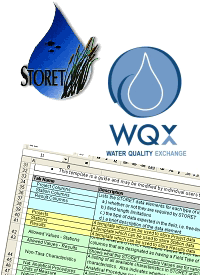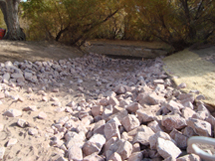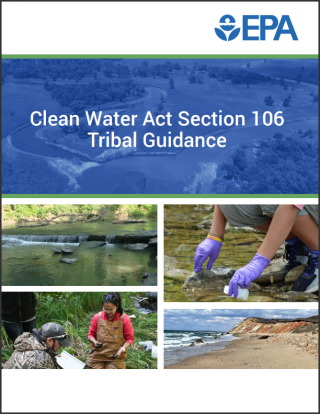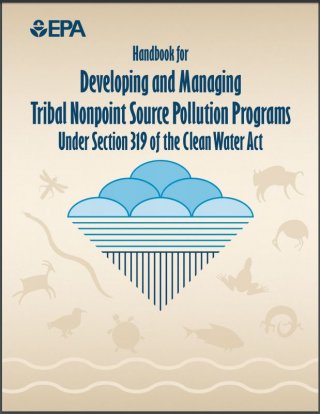Tribal Clean Water Act Programs and Grants in EPA's Pacific Southwest (Region 9)
EPA’s Pacific Southwest (Region 9) implements and enforces federal environmental laws in Arizona, California, Hawaii, Nevada, the Pacific Islands, and 148 Tribal Nations.
- About Tribal Clean Water Act Programs and Grants
- Public Notice
- Events
- CWA Section §106 Water Pollution Control Grants
- CWA Section §319 Nonpoint Source Pollution Control Program Grants
- CWA Section §104(b)(3) Wetlands Program Development Grants
About Tribal Clean Water Act Programs and Grants in EPA's Pacific Southwest
The objective of the Clean Water Act (CWA) is to restore and maintain the chemical, physical, and biological integrity of the Nation's waters. CWA programs support monitoring, assessment, protection, prevention of polluted runoff in waterways and wastewater infrastructure.
EPA's Region 9 Tribal Water Office manages all grants related to the Clean Water Act for over 100 federally recognized Tribes within Region 9. The Tribal Water Office also provides programmatic and technical assistance for water quality standards and for the CWA grant programs. View CWA Project Officers.
Public Notice
Public notices will appear here when available.
Events
-
Winter 2026 RTOC Meeting
Save the dates for the upcoming Winter 2026 RTOC and refer to the draft agenda for more information.
- Date: February 3 - 5, 2026
CWA Section §106 Water Pollution Control Grants
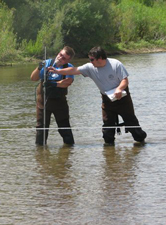
Purpose
To assist Federally recognized Indian Tribes develop institutional capacity to administer water quality programs and protect natural resources.
Eligible Activities (not limited to this list)
- Performing water quality monitoring and assessments
- Carrying out activities to meet the three reporting requirements (for more information, see below)
- Develop a monitoring strategy
- Submission of data is a WQX/STORET-compatible format
- Annual Water Quality Assessment Report
- Hiring qualified staff to identify and prioritize water quality issues
- Leasing/renting office space and purchasing water quality monitoring equipment and supplies
- Developing a Nonpoint Source Assessment Report and Management Program Plan
- Conducting studies related to water pollution control
- Implementing and enforcing water pollution control measures
- Developing and implementing ground water quality monitoring programs
- Developing Tribal-approved Water Quality Standards (WQS)
- Developing a 305(b) Report
- Training and travel
Funding
EPA typically awards grants between $40,000 and $200,000; first time applicants may receive grants for $40,000.
Eligibility Requirements
Federally recognized Tribes must be determined eligible to apply for CWA Section 106 funding before applying.
-
Financial Assistance Eligibility Handbook for Tribal CWA Programs in the Pacific Southwest (pdf)
(1.57 MB, November 2022)
This handbook is designed to assist Indian Tribes in EPA's Pacific Southwest (Region 9) with preparing applications for financial assistance eligibility for Clean Water Act Water Quality Planning and Protection Programs.
Contacts
Guidance and Application Information
Region 9 Resources
-
EPA Region 9 FY25 CWA Section §106 Solicitation Notice (pdf)
(657.92 KB, November 2024)
EPA Pacific Southwest (Region 9) Fiscal Year 2025 (FY25) Clean Water Act Section 106 (CWA §106) Water Pollution Control Program solicitation notice for the Fiscal Year 2026 (FY26) grant cycle. - Region 9 Tribal Water Section Grant Fact Sheets
- Managing the Quality of Environmental Data at EPA Region 9
-
Region 9 Tribal CWA §106 Workplan and Budget Template (xlsx)
(27.5 KB, November 2020)
EPA Pacific Southwest (Region 9) Tribal Clean Water Act (CWA) §106 Workplan and Budget Template.
National Resources
- CWA Section 106 Tribal Guidance
- Water Pollution Control (Section 106) Grants
- Tribal Grants under Section 106 of the Clean Water Act
Fact Sheet
-
Tribal Water Quality Accomplishments in EPA's Pacific Southwest (pdf)
(2.01 MB, 2006, EPA-909-K-06-001)
Information about EPA Region 9's Tribal CWA Section 106 program, highlighting successful CWA Section 106 projects in the Pacific Southwest.
CWA 106 Reporting Requirements
Managing and analyzing water quality data effectively is integral to the CWA Section 106 program. The program contains 3 reporting requirements that Tribes must fulfill while implementing their water quality programs: Follow these links to obtain detailed information about each reporting requirement.
Clean Water Act Section §319 Nonpoint Source Pollution Control Program Grants
Purpose
The purpose of the Nonpoint Source (NPS) Pollution Control Program is to assist Tribes develop and implement polluted runoff control programs that address critical water quality concerns at a watershed level.
What is Nonpoint Source (NPS) Pollution?
NPS pollution - polluted runoff - occurs when rainfall, snow melt, or irrigation water runs over land or through the ground, picks up pollutants, and transports them into surface waters or ground water. Major nonpoint sources of pollution include agricultural practices; unrestricted livestock grazing; poor siting and design of roads, highways, and bridges; forestry; urban runoff; abandoned mines; construction sites; channelization of streams; and hydromodification, such as building and maintaining dams and levees.
Eligible Activities (not limited to this list)
- Road stabilization/removal;
- Riparian planting;
- Stream channel reconstruction;
- Low impact development projects/storm water management;
- Livestock exclusion fencing;
- Springs protection;
- Septic system rehabilitation;
- NPS ordinance development;
- Project monitoring (pre-project, during project, post-project);
- Development of a watershed-based plan;
- Training which assists the applicant in development NPS implementation projects;
- Staff time and materials towards implementing projects;
- NPS education and outreach relevant to successful implementation of NPS projects; and
- Post-wildfire restoration
Funding
- Base Funding: Funds are allocated based on Tribe’s land area. For Tribes with less than 2 square miles, the base allocation is $45,000; for Tribes with 2-50 square miles, the base allocation is $50,000; for Tribes with 50-500 square miles, the base allocation is $55,000; and for Tribes with 500 square miles or greater, the base allocation is $70,000.
- Competitive Funding: After all base allocations are made to Tribes, the remaining amount from overall national allocation is up for competition to all eligible Tribes, regardless of land size. Tribes applying for competitive funds can request up to $125,000 of federal funding.
Eligibility Requirements
-
Financial Assistance Eligibility Handbook for Tribal CWA Programs in the Pacific Southwest (pdf)
(1.57 MB, November 2022)
This handbook is designed to assist Indian Tribes in EPA's Pacific Southwest (Region 9) with preparing applications for financial assistance eligibility for Clean Water Act Water Quality Planning and Protection Programs. -
Handbook for Developing and Managing Tribal Nonpoint Source Pollution Programs (pdf)
(8.6 MB, February 2010)
This updated handbook provides guidance and practical templates for tribes interested in obtaining federal funds to manage nonpoint source pollution under section 319(h) of the Clean Water Act. It describes the 319 (h) grant process, and how to develop a nonpoint source assessment report and management program. This version includes new tribal examples, and a section focused on the watershed-based planning approach. The final section includes resources for tribes related to program goals.
Contacts
- Howard Kahan
kahan.howard@epa.gov
(415) 972-3143 - Larry Maurin
maurin.larry@epa.gov
(415) 972-3943
Guidance and Application Information
Resources
- Region 9 Tribal Water Section Grant Fact Sheets
- Success Stories: 2003 Tribal Nonpoint Source Program (pdf) (1.25 MB, 2003, EPA 909-R-03-004)
- National NPS Program
- Grants for Your Region: Information Specific to EPA Region 9
CWA Section §104(b)(3) Wetlands Program Development Grants
The goals of EPA's wetland program include increasing the quantity and quality of wetlands in the U.S. by conserving and restoring wetland acreage and improving wetland condition. In pursuing these goals, EPA seeks to build the capacity of all levels of government to develop and refine effective, comprehensive programs for wetland protection and management.
Purpose
The wetlands program development grant (WPDG) provides states, Tribes, local governments, interstate agencies, and inter-Tribal consortia an opportunity to carry out projects to develop and refine comprehensive wetland programs. WPDGs provides eligible applicants an opportunity to conduct projects that promote the coordination and acceleration of research, investigations, experiments, training, demonstrations, surveys, and studies relating to the causes, effects, extent, prevention, reduction, and elimination of water pollution.
Funding
EPA typically awards between $50,000 to $350,000 per project grant. Funding is dependent upon amount requested and the overall size and need of the project.
Starting to think about developing a Tribal wetlands program?
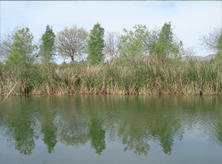
Experience with many Tribes and states have distilled a set of core elements, actions, and activities that together comprise a comprehensive wetland program. EPA has summarized these common core elements, actions, and activities in the Core Elements of an Effective State and Tribal Wetlands Program Framework, also called the Core Elements Framework (CEF). The CEF describes in greater detail each of the four core elements that make up an effective state/Tribal wetland program. The four core elements are:
- Monitoring and assessment
- Regulation
- Voluntary restoration and protection
- Wetland WQS
Each of these four core elements is comprised of several broad "actions" that if collectively carried out would complete that core element. In addition, each action is made up of several more specific "activities" which are the actual steps a state/Tribal/local government would carry out to achieve each option. The four core elements, the set of development or refinement activities and the specific actions under the four core elements that are eligible for funding are listed at Wetland Program Development Grant.
Further Information
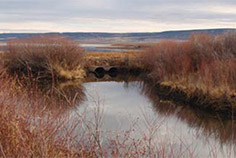
The full CEF can be found at Core Elements of an Effective State and Tribal Wetlands Program Framework. Some of the activities outlined in the full CEF are not eligible for the WPDG funding. The CEF provides a menu of activities for wetland program development, regardless of whether such activities are eligible for WPDG funding.
Eligibility Requirements
There are no eligibility requirements for Tribes except the Tribe must be federally recognized.
Contacts
Sarvy Mahdavi
mahdavi.sarvy@epa.gov
(213) 244-1830
Resources
Performance Partnership Grants
CWA 106, CWA 319, and Wetland Program Development Grants (WPDGs) are all eligible to be combined into a single Performance Partnership Grant (PPG). To find out more, visit the national PPG website and view the latest Best Practices Guide for Performance Partnership Grants with Tribes and Intertribal Consortia (pdf) (959.21 KB) .
Tribal Consultation Resources
- Tribal Engagement Opportunities for National and Regional Water Actions (pdf) (234.11 KB, December 2025)
- EPA Region 9 Water Division Tribal Consultation SOP (pdf) (200.37 KB, December 2021)
- Tribal Consultation in EPA's Pacific Southwest
Additional Resources
Reports
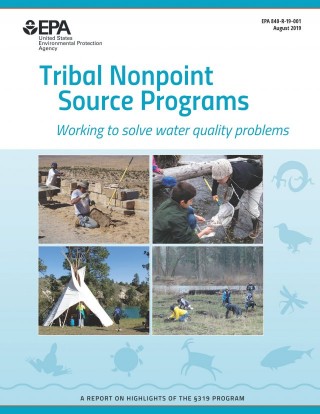
This report illustrates the diverse work and accomplishments of Tribal NPS programs supported by §319, including spotlights on Pacific Southwest Tribal staff and projects contributing to NPS successes.
Related
- Technical Memo: Investigation of Abandoned Wells on Navajo Nation (pdf) (39.82 MB, March 11, 2019)
- Tribal Water Quality Accomplishments in EPA's Pacific Southwest (pdf) (2.01 MB, 2006, EPA-909-K-06-001)
